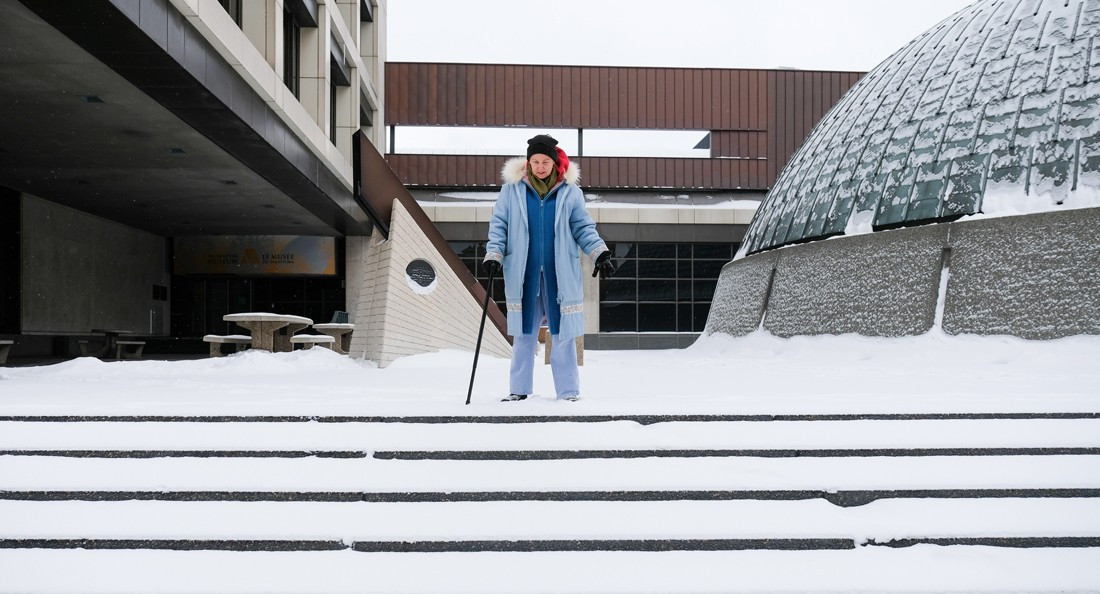Actively accesible
Accessibility in the Winnipeg arts scene
Accessibility is a contentious topic in the Winnipeg arts scene. Major comedy venues like Wee Johnny’s and the second and third floor of the King’s Head pub are inaccessible to people in wheelchairs, as well as many other galleries and performance venues in the Exchange District.
“It is not just about making sure that people can come through the door,” Adriana Alarcón, program and outreach co-ordinator at Mentoring Artists for Women’s Art (MAWA), says.
“It is wanting people to come through the door. It is wanting people to have access to the things that we do.”
By choosing inaccessible venues, organizers “are basically saying they don’t want people with disabilities there,” Jenel Shaw, executive director of Arts AccessAbility Network Manitoba (AANM) says.
“It is an ignorance,” she says. “There are so many people with disabilities in Canada. (It’s about) 20 per cent ... With our aging population, it’s even going to get higher. There is a whole section of the population that is not being welcomed into a space ... It is saying that ‘we don’t want you here. We’re not thinking of you. You’re not included.’”
“I think a lot of people often think about disability on a very basic level. Can you probably maybe, kinda, sort of get into the building? The end. Nobody thinks about if you can get on the stage. No one thinks about (if you can) use the bathroom,” Riki Entz, a former Winnipegger and accessibility associate at Inside Out Theatre in Calgary, says. “If we forget about disabled people, we lose a huge purchasing power. We lose a huge amount of people who are involved in the economy.”
Artists with disabilities
It’s not only about the audience. Artists themselves may need accomodations.
“The very first time I was able to present from the stage, one of the very first things I said was ‘I’m so excited to be on the stage,’ because that is how rare it is. That was not a Winnipeg experience,” Entz says.
“We think that there’s a real need for people with disabilities to participate in the arts and (for) stories of people with disabilities to be told. But not just their disability stories, but their human stories, their art stories and their creative stories, their everyday stories,” Alarcón says.
Isaac Vint, actor and wheelchair user, portrayed Tiny Tim in Royal MTC's recent production of A Christmas Carol.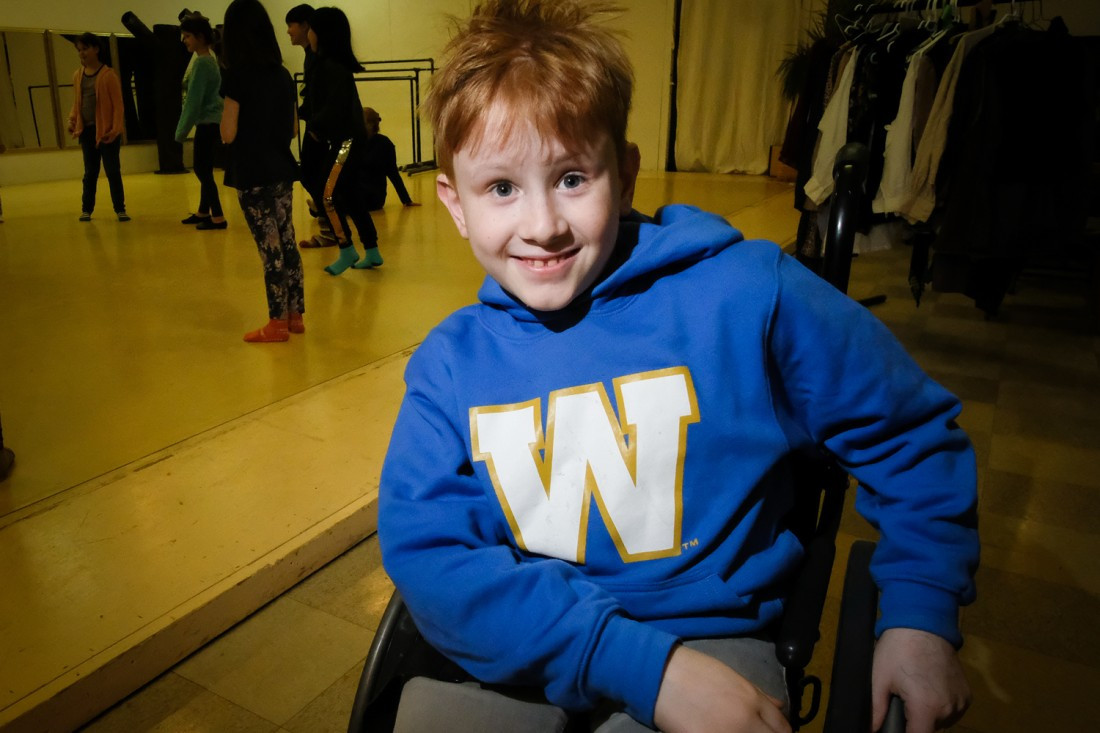
Nine-year-old Isaac Vint, actor and wheelchair user, who played Tiny Tim in Royal Manitoba Theatre Centre’s (RMTC) A Christmas Carol, says “people try to make a space as accessible as they can,” but these solutions are not always perfect.
At RMTC, “they “had an elevator for rehearsal, (but) not for backstage. I had to crawl down the stairs sometimes,” Vint says. Other times, “a stage manager carried him,” his mother, Trish Cooper, says.
When Vint attended a Rainbow Stage camp, “there were other classes on the second floor, so they had the staff carry the wheelchair. The building itself was not accessible, but the people were. Accessibility is about being creative and thinking outside the box,” Cooper says.
Vint and Cooper acknowledge that as he gets older and taller, some of these options will become more difficult. He has already been prevented from taking some classes because they were on a floor without an elevator. Vint says “I’m kind of sad about it, because it is a little unfair. People just need to be more aware.” Isaac Vint interacts with his friends during theatre class. Isaac Vint takes part in a warmup game during theatre class. While in class, Isaac prefers not to use his wheelchair.
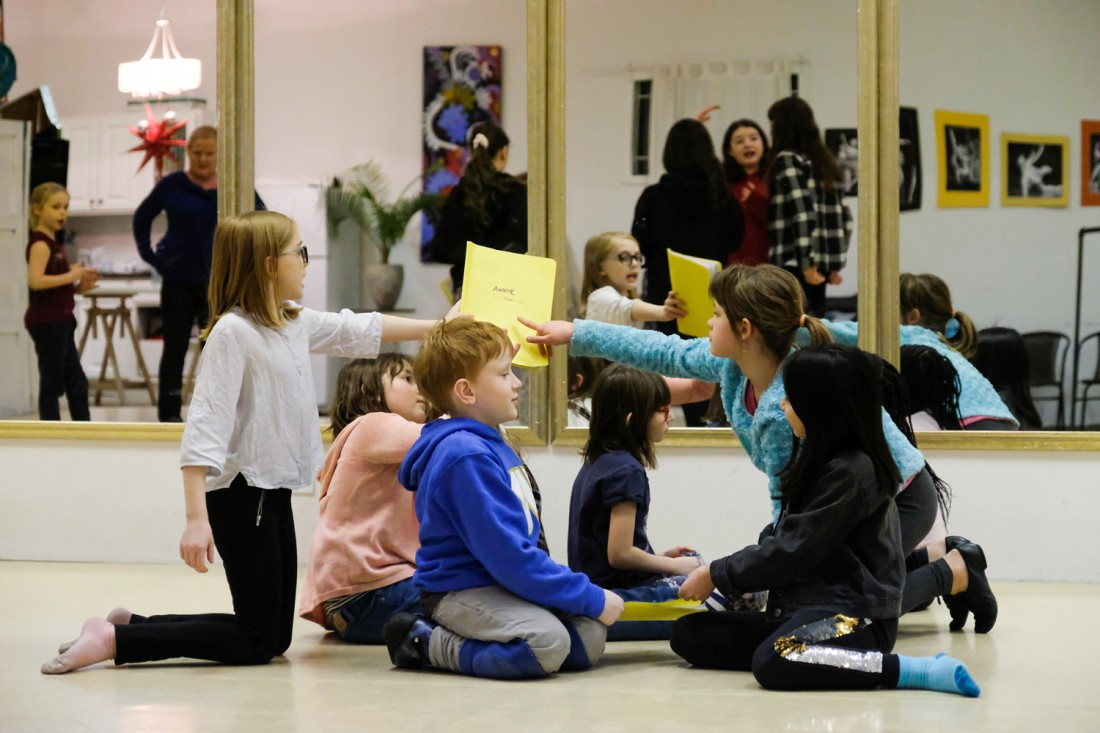
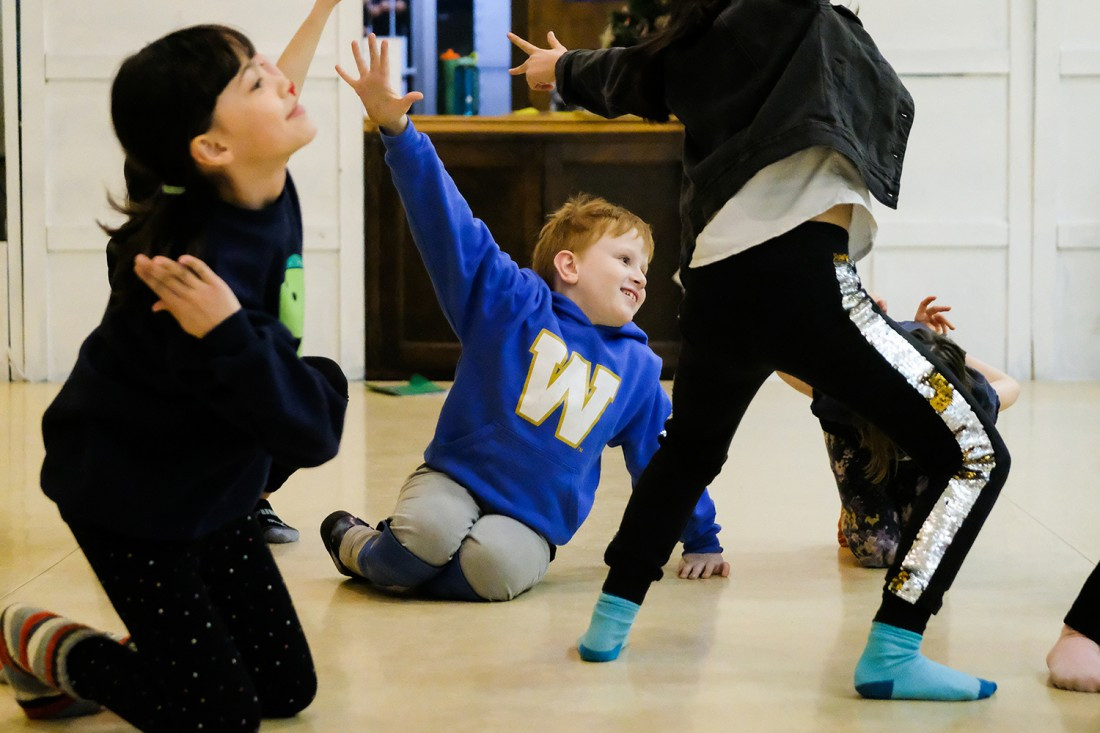
Creative flexibility
MAWA has faced challenges in their space, which they continue to evolve. Their main studio is at street level, but the apartment upstairs, which is used for their artist-in-residence program, is up several steps.
“Having flexibility is really important for us. ... We’re not going to cancel the whole residency program because it is upstairs and there is no elevator. We’re going to acknowledge that it is inaccessible, and we’re going to keep working on it,” Alarcón says.
“If there was an artist that we wanted to invite where that was difficult, then we would find a different solution. There (have been) many times where we have done that (by housing) them in an accessible place.”
Shaw says, “we find the physical barrier is an issue but sometimes ... people just don’t have the understanding of what is needed. It is really important for us to be that bridge, so people understand what to expect when they want to make a place accessible,” especially when it comes to invisible disabilities.
Invisible disability, visible accessibility
Sometimes it can be difficult to make venues accessible, depending on the nature of the art.
“It is hard to compare comedy to other art, because it takes place in a bar, which is more focused on making money than the art itself,” autistic comedian Adam Schwartz says. “At times, I have found the light onstage to be bright, or there has been conversation at the bar that has distracted me. Not to get that consideration is frustrating.”
But there are other ways to be accessible to people with invisible disabilities. One way is to make a space fragrance-free.
Xiam Webster is a member of Incantatem, a choir which sings songs from pop culture, and a longtime Kids Fringe co-ordinator. Webster is scent-sensitive, hard of hearing and uses a mobility aid.
“I have a lot of guilty feelings about imposing my scent-free request on people, but this is the one that is most important, because I have little to no control over it. With walking, I can use a cane. With hearing, I have coping techniques, but with scents, I’m completely at the mercy of those around me, and because it is invisible, people may not know about it,” Webster says.
“‘But it’s natural!’ (is something) I’ve heard so often. I’m kind of sassy, and I would love to answer ‘but it will naturally kill me,’ but I can’t do that. Being Canadian, I have to be nice ... if I’m exposed to coconut, I’m likely to need my rescue medicine and an ER visit.”
MAWA has not only put up signs in their main space and their accessible, all-gender bathroom, requesting people to refrain from using scents, but they have also enforced the rule, which is not often the case for many arts organizations. Alacón says, “we’ve had to ask people to wash up, because they’ve come in with too much perfume.”
Fiscally feasible
Even with care and effort, there can still be confusion about what accessibility means.
“I’ve had places in Winnipeg refer (to themselves) as accessible, because people were thinking of a different meaning of accessible. They were thinking economically accessible. That is very important, and it helped me to broaden my meaning of what accessibility means, but it did not help me get to that event,” Entz says.
Fiscal accessibility is also an issue for people with disabilities. Around 400,000 people with disabilities who are able to work in Canada are unemployed, and even more are underemployed. Yet accessible seats at major venues are often in the highest price range. At Rainbow Stage, the only wheelchair spots are in the priciest seats, and at Winnipeg Jets games, accessible seats cost a minimum of $120 and up to $250.
Having a friend or support worker come along can be expensive as well. RMTC has mid-range seats only, and companions get a 50 per cent discount. At Winnipeg Jewish Theatre, the prices are the same, but the companion has to pay the full ticket price. At Prairie Theatre Exchange, however, the prices are the same as the regular prices, and the companion gets in for free.
Resources
Full accessibility can be near impossible, but there are resources available. AANM offers ASL interpretation for artist-run centres, which at MAWA has to be requested two weeks in advance. Both organizations are members of the Manitoba Artist-Run Centers Coalition (MARCC), which has a portable ramp, which is free for rent from Video Pool.
Shaw says that AANM “focuses on the artist, which is why we got that ramp. That ramp is not for audiences to be able to attend the event. It is so actors can get on the stage or get into the club,” Shaw says.
People with disabilities are the real experts
“The No. 1 thing is that you need to talk to people with disabilities ... Because I find often that people assume they know how to make spaces accessible, and that’s an issue,” shaw says, “like with organizations creating ramps that are too steep.”
Xiam Webster is scent-sensitive, hard of hearing and uses a mobility aid.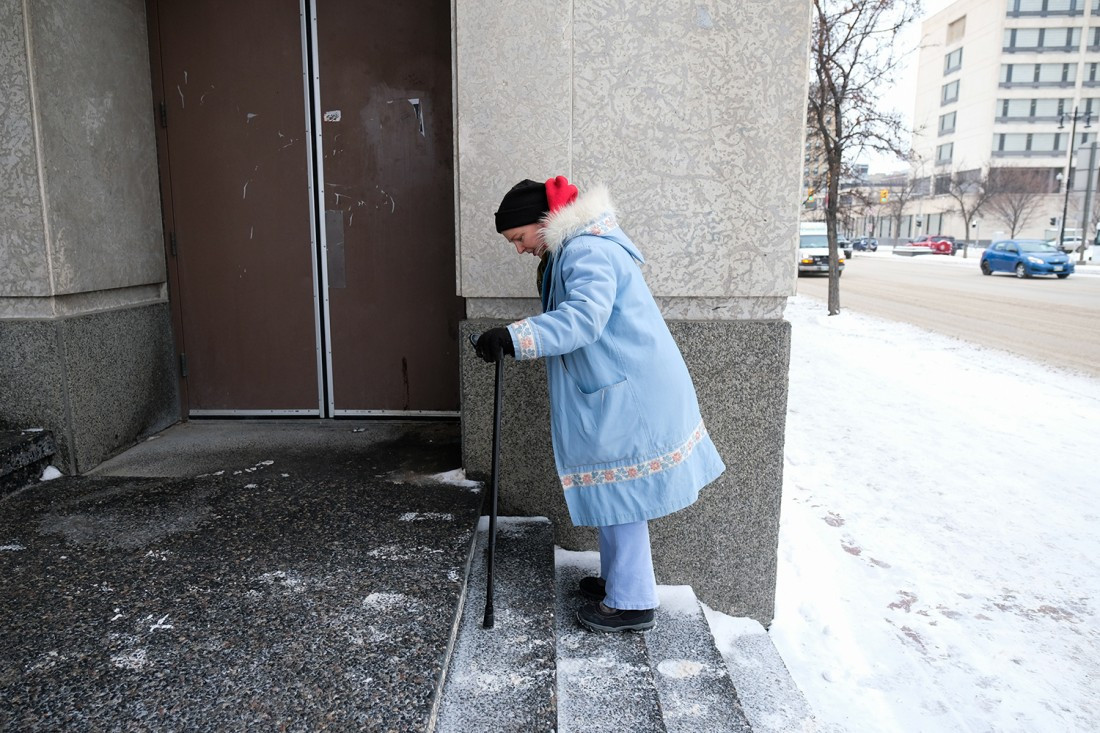
“If a place wants to be more accessible, I encourage them to contact us, and we can give them some tips, or contact some of their own members that have disabilities and ask them ‘what is it you need that would be helpful for you?’ ... It’s really important to just reach out to the disability community and ask them directly,” because they know their own needs best.
“What I have to offer is, I think, more the stories, to let people know it is a real person who is suffering, not just a nameless statistic,” Webster says. “I’m not an expert. I’m just a person affected by invisible things.”
The problem with invisible things, of course, is that they are invisible, but by asking people with disabilities, they can point the way.
“Don’t panic,” Vint says. “But just be aware.”
Published in Volume 74, Number 14 of The Uniter (January 16, 2020)

